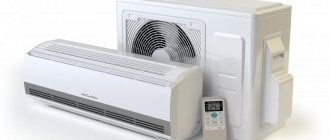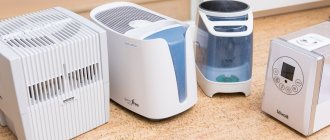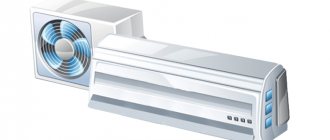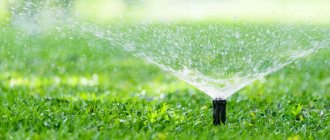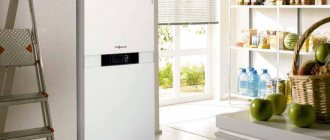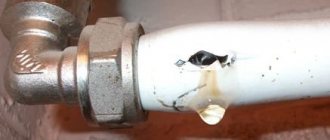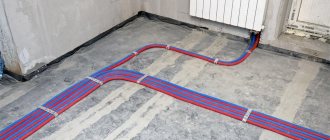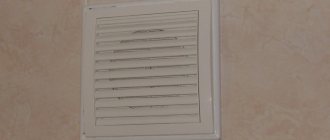What indicator is used to determine the optimal level of humidity in a room?
In order for the entire body to feel comfortable, the air must be humid, but this figure must be within 45%. This is an average value, but for rooms with different functional purposes the humidity level is different:
- for an office and library it is 40-45%;
- for the dining room, bathroom, kitchen, living room - 40-60%;
- for an adult bedroom – 40-50%;
- for a children's bedroom - 45-60%.
To find out whether your health has worsened due to non-optimal levels of air humidity, you need to know how to measure the air humidity in an apartment, which changes even throughout the day. Dynamic changes are characterized by a change:
- seasons;
- weather conditions;
- operation of heating devices and air conditioning systems;
- features of the materials used in finishing the interior of the apartment and the facade of the house.
Important! Under the influence of the above factors, the humidity level can drop to 20%.
Therefore, it is worth understanding these subtleties in order to be able to normalize humidity at any time.
How to measure air humidity in an apartment
The level of humidity characterizes the microclimate in a home in terms of human comfort, along with air quality and temperature. For each room in the house there are recommended indicators depending on the purpose, which do not affect a person’s well-being and ensure the safety of the environment. A humidity meter in the apartment helps measure the number of water vapor molecules.
Air standards
To determine the air humidity in a room, a hygrometer is used.
The atmosphere contains oxygen, nitrogen, carbon dioxide and other types of gases, the concentration of which does not exceed 1% of the total mass. Water vapor is also present in the air and is unsaturated - the number of molecules evaporating from the surface of the water is not equal to the number of elements that return there over a period of time.
The absolute humidity indicator expresses the mass in grams of steam that is actually present in 1 m3 of air. The value of the index is affected by temperature and the supply of moisture with new flows. At the same temperature, the air can absorb a certain volume of vapor and become completely saturated with moisture.
Relative humidity is the percentage of absolute value to the level of vapor saturation at certain temperatures. The pressure of concentrated vapor increases when the air is heated; when saturated, condensation appears in the form of dew and fog. You can measure the air humidity in an apartment using special tools and instruments.
Average standards for an apartment:
- kitchen, dining room, bathroom – 40–60%;
- study or library – 30–40;
- bedroom – 40–50%,
- children's - 45–55%.
The generally accepted humidity level is 45%, but varies depending on the operating characteristics. Deviations occur during winter cold and summer heat. Lack of moisture or its excess leads to deterioration of well-being and health. The bathroom and kitchen are characterized by a high level of humidity due to their functionality, so the standards for them are higher.
In autumn, the air temperature decreases, and heat sources are not yet involved in the work, so ventilation should be increased to eliminate waste air masses.
Instruments for measuring humidity in an apartment
Hair hygrometer &#; old invention for determining humidity levels
A thermohygrometer is a technical device for determining the degree of air saturation with water vapor and temperature. The operating principle of the device is based on physical laws and chemical properties of materials.
There are several types of devices that change properties with changes in humidity:
- ceramic - uses the property of clay, kaolin or oxides of certain metals to change electrical resistance;
- hair - works based on the ability of human hair to lengthen and shorten;
- condensation - finds the dew point by the degree of heating of the metal element using an optical device;
- weight - operates on the basis of identifying the volume of absorbed moisture from a certain mass of the flow under study.
Electronic and psychrometric devices are most often used.
The psychrometer works based on the readings of two thermometers, called dry and wet. The first determines the degree of heating of the air, and the second is wrapped in a fabric wick, the end of which is placed in a container of water. The wetted sensor measures the temperature of the wet tow as water droplets evaporate. When reading the information, the difference in readings is determined and compared with the data in the table that is sold with the device.
Electronic hygrometers for measuring air humidity in an apartment are:
- capacitive;
- conductometric (resistive);
- piezoelectric.
Capacitive devices determine the difference in the ability to collect electrical charge by a capacitor when the humidity of the environment changes. Resistive ones work on the principle of increasing or decreasing the electrical conductivity of polymers under different conditions. Piezoelectric ones operate based on the property of a quartz plate to change the pulsation frequency with increasing weight when saturated with vapor.
The danger of high humidity and dry air
When the saturation of water vapor in the atmosphere decreases, static electricity arises, raising dust particles. Dry air is an optimal environment for the proliferation of microbes and dust mites, so you need to determine the air humidity in the apartment and increase it.
Problems arising in a dry atmosphere:
- the appearance of dermatitis, peeling and irritation, decreased skin elasticity;
- redness of the eyes, dryness and burning, drying out of the mucous membrane;
- headaches and weakness, decreased performance, increased stress on the heart and circulatory system;
- slow functioning of the digestive system;
- increased frequency of colds, dry airways;
- increased allergic reactions to various pathogens.
Plants in a dry microclimate evaporate more water, so their balance is disrupted, leaves curl, dry out and fall off. Colonies of spider mites, whiteflies, and thrips develop on the body of indoor flowers.
An excess of water in the atmosphere is also painful for the human body, as mold, bacteria and fungi multiply.
When indoor humidity is high, mold grows
Problems in damp microclimates:
- respiratory diseases become more frequent, for example, runny nose, bronchitis, asthma and allergies, sometimes temporary manifestations become chronic;
- you feel damp and stuffy, it becomes difficult to breathe;
- The drying time of the wash increases.
Walls and pieces of furniture are covered with a thin layer of mold, and there is a damp smell in the air. Houseplants rot and disappear. The leaves and frames of wooden doors swell and do not close well. In closed rooms, moisture hovers in the atmosphere and gradually settles on surfaces, creating an environment for bacteria.
Changing air humidity at home
To reduce humidity, it is necessary to arrange ventilation
In winter, street air enters the room and is heated by heat sources, for example, heaters or central heating radiators. In its original state, it can retain a small amount of moisture, because chilled As the temperature rises, the ability to humidify increases, but the vapor content remains the same, because moisture has nowhere to come from.
The difference between these positions (can hold and actually contains) increases, so the relative humidity drops. Moisture evaporates from the surface of the skin, the water balance in the body is disturbed, and a feeling of dry mucous membranes appears.
Dampness in an apartment also does not appear by chance and has reasons:
- There is no ventilation in the house, there is no natural flow of outside air, or it does not penetrate enough into the room due to sealed modern windows or doors.
- Sometimes natural ventilation is not enough, but forced inflow and removal is not organized or the channels that remove waste materials are clogged.
- There is water in the basement of the house due to the poor work of the service company, in which case the foundation, walls, and floor covering are saturated with moisture.
- The seams between the wall panels are poorly sealed, which leads to the formation of condensation inside the room and the gradual evaporation of droplets.
- Neighbors from above periodically flood, which causes the ceilings and walls to become wet and subsequently release moisture into the apartment.
Residents often dry washed clothes inside the room, from the surface of which steam rises and humidifies the atmosphere. There is no domed hood above the kitchen stove, and steam from boiling enters the environment. Sometimes water pipes become unusable in the thickness of the wall and cause the enclosing structures to become wet.
How to increase humidity
You can increase humidity using a humidifier
Indoor plants, from whose leaves water intensively evaporates, help increase humidity to normal levels. But in a dry room, they themselves lack moisture, so spraying is an effective way. It is better to carry out the procedure in the morning.
To increase the content of water vapor in the air you need:
- ventilate the room 2–3 times a day, regardless of the weather and temperature outside the window; you need to open the openings for 20–40 minutes;
- carry out daily wet cleaning of floors and open surfaces;
- hang wet towels in the room, place containers with water and change them when dry.
The industry produces professional air humidifiers in the form of steam, ultrasonic and mechanical devices.
In steam appliances, the liquid is heated by an electric element and passes into the atmosphere of the room in the form of steam. The units quickly increase the humidity in the air.
Ultrasonic devices deliver cold steam, which is produced by waves directed at a moistened membrane. They operate silently and partially disinfect flows.
Mechanical installations are called sinks. They do not release steam, but pass air from the room through a water plug. The flow is sucked into a container where the blades rotate, touching the surface of the water as they turn. The air is humidified inside and released into the atmosphere with the required characteristics.
How to reduce humidity
Household dehumidifier
It is possible to prevent excessive saturation of the air space with water vapor at the construction stage or during the finishing work. For this purpose, waterproofing of floors, external walls and ceilings is done. Rolled materials or special impregnation with moisture-proof compounds are used. Such prevention will prevent the penetration of excess liquid, but will not solve the problem of moisture coming from internal sources.
Damp rooms must be regularly ventilated to provide an influx of masses with a reduced ability to hold moisture. It is not recommended to dry wet items. It is necessary to check the operation of the ventilation system and identify leaks in the water supply and sewerage systems. There are household dehumidifiers available for sale.
Condensing units operate at a temperature not lower than +10°C, taking into account the dew point. The device draws in air, which falls on the plates, cooled with a special substance to +7°C. Condensation collects and drops flow into a collecting container. The dried air is heated before entering the home.
The adsorption type operates in unheated buildings, basements, garages, verandas, and attics. The unit has two chambers, hermetically sealed from the environment. A rotor is installed between them. The fan of the first compartment drives the air flow to the drum, where moisture is absorbed using silica gel. The dried mass goes into the second chamber with a heater and returns to the room.
Hygrometer
The surest and easiest way is to use a special device. You can measure the air humidity in an apartment using a hygrometer with an accuracy of 0.1%.
Important! These are multifunctional devices widely available on the market. Electronic models, in addition to humidity, can show other characteristics of the indoor microclimate: temperature, pressure, clock, etc.
Effects of dry air
From the above it follows that everyone should understand how to find out the air humidity in an apartment. A low value of this indicator is also dangerous. This situation occurs especially often during the hot season.
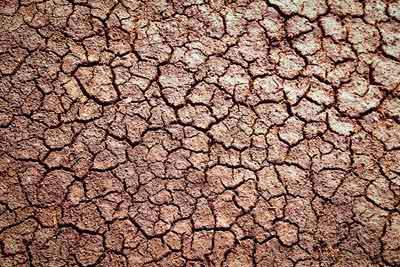
First of all, all dust, wool and other particles begin to freely rise and move with air masses. They do not settle on interior items and freely enter the human body.
Glass tumbler
This method is characterized by the least accuracy, but in the absence of the ability to diagnose air humidity using a more reliable device, it will do. To measure air humidity in an apartment without a device:
- Fill a dry glass container with cold water.
- Cool the contents of the glass until its temperature drops by 3-5 °C.
- Place the glass on a cabinet in the room where the measurement is to be taken, away from heating appliances.
- Evaluate the outcome by analyzing the process.
- The walls of the vessel fogged up, but after about 10 minutes they became dry again - the humidity is extremely low.
- After 5-10 minutes, the fogged walls have not dried, and the condensation rolls into large drops into the glass - the air humidity is increased.
- The glass fogs up evenly, moisture does not evaporate from it, but does not roll down the walls - the moisture is within normal limits.
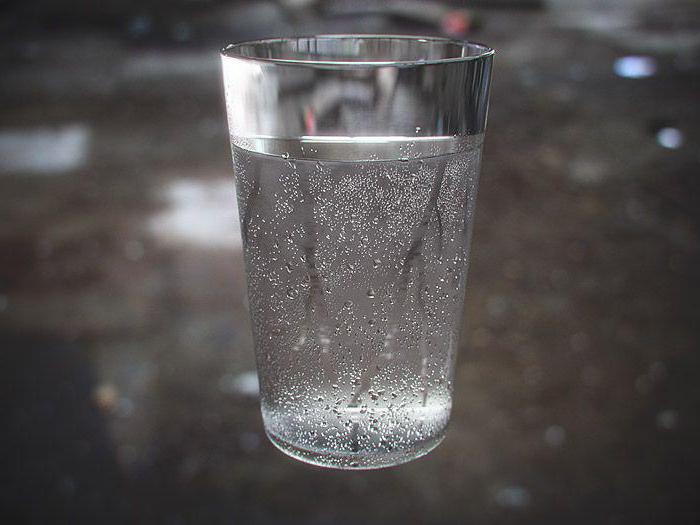
Ways to reduce humidity
Increased moisture content leads to the formation of mold and mildew on furniture and walls, the air in the house becomes heavy and musty, and in the bedrooms the bed linen is constantly damp.

To reduce the humidity in a room using a local method, special devices are used - dehumidifiers.
Simple ways to reduce air humidity in an apartment:
- Installing additional heaters while ventilating the room will remove excess moisture, but this method incurs additional energy costs.
- Replacing windows will help solve the problem; low-quality double-glazed windows often “cry”, which significantly increases the amount of moisture in the room.
- Freeing the window from thick curtains to ensure good air circulation in the room.
- The use of natural materials in decoration will significantly improve the microclimate in the house.
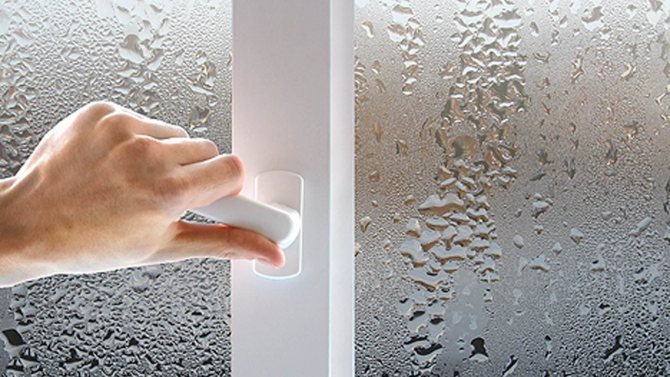
If the high humidity in the room is seasonal, then in this case it is more practical and cheaper to use dehumidification tablets.
Thermometer
Do you know what device is used to measure air humidity in an apartment? Thermometer. This device works on the same principle as a psychrometer. The procedure is determined by four stages, during which:
- Measure the air temperature using a traditional mercury thermometer. Record your results.
- Wrap the tip of the thermometer with a damp cloth or cotton wool. After leaving it in this state for 10 minutes, check the indicators and evaluate the result. Record the temperature again.
- Make the calculation: t1-t2.
- Use Assmann’s special psychrometric table and determine the humidity level by comparing the value with the number suggested in the manual for a specific type of room.
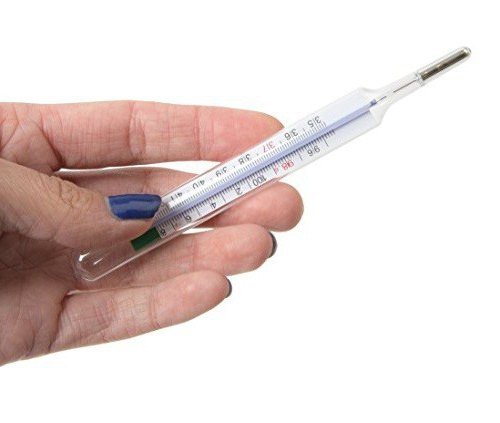
Humidifier
This compact device is designed to humidify rooms up to 150 m2. It works according to the following principle: hidden under the attractive-looking body is a small reservoir intended for water. Liquid is poured into it to a certain level, which gradually evaporates during the operation of the humidifier, thereby saturating the air with its molecules.
The entire range of purchased air humidification devices is divided into three volume groups. It is clear how you can measure the air humidity in an apartment, and what measures to take to increase it.
Available humidifiers
You can make the air less dry using a household humidifier. Such devices are sold complete with hygrometers.
Types of humidifiers:
- steam (humidified by evaporation from steam heated by water);
- traditional (using cold steam);
- ultrasonic (works due to a membrane that vibrates when demineralized water hits it);
- humidifier-air purifier (not only raises the level of humidity, but also removes dust).
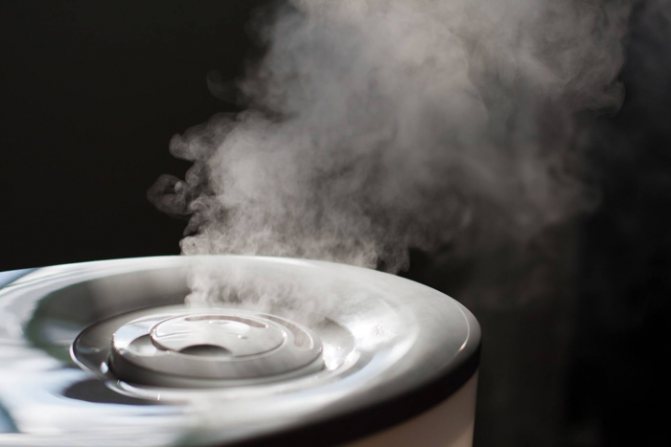
Humidifier
The ultrasonic type is considered the most advanced. It is compact, safe and economical. To avoid damaging the device, only distilled water is used. Steam humidifiers are not recommended for children's rooms.
Attention! Choose a humidifier based on the area for which the device is designed. Excessive air humidification is no less dangerous to health.
A quick, but not as effective method is a regular spray bottle. Some people practice hanging a wet cloth over the heating system. Water containers placed around the apartment also help a little. Indoor plants also have a good effect on dry climates. But, if you consider that your health directly depends on air humidity, then you should adhere to more modern methods. For example, the climate control system. Air conditioners of this type normalize the temperature, humidity and level of “dust” in the room. They filter street air in purification units. The ventilation system constantly provides a fresh influx.
Traditional humidifiers
The mechanical device operates due to the built-in fan. The cooler forces air through a special reservoir of water, where it is saturated with water molecules and simultaneously cleaned of dust. As a result, you breathe clean, humidified air.
Important! A significant disadvantage of this type of device is the high level of noise that it produces during the air filtration process. Ionization capabilities are also limited, because a traditional humidifier can only raise air humidity to 60%.
Steam humidifiers
The operating principle of such devices is reminiscent of the operation of a kettle. Inside the container, the water boils, and the steam formed during the reaction comes out. Some of the models of steam humidifiers are even equipped with special nozzles for inhalation, which allows you to use the device for health benefits.
Important! After measuring the air humidity in the apartment where the steam humidifier is installed, the maximum humidity level reaches 60%.
Users also highlight some disadvantages of the devices:
- Hot steam with a temperature of up to 60°C, if handled carelessly, can cause burns and damage nearby objects and the surface of furniture.
- Too noisy during operation.
- Consumes a lot of electricity.
Ultrasonic humidifiers
A special membrane is built inside the device, which is responsible for converting water into steam. This device is less noisy than previous options. The presence of an additional function of heating water in the process of turning it into steam allows you to disinfect the air without unnecessary effort, getting rid of germs.
These humidifiers operate on distilled water, which is poured into tanks with special cleaning cartridges. Filters must be replaced regularly.
Important! When choosing a device, do not forget to take into account the area of the room where the humidifier will be used. The device will be useless if placed in a room with an area larger than the recommended one and will not bring any benefit.
Traditional methods of increasing air humidity
You know how to measure air humidity in an apartment, but none of the described methods for increasing humidity are suitable for you... You can try to do it “grandmother’s way.” The following methods are suitable:
- The simplest and most effective is a damp towel on the batteries. As the fabric heats up, it begins to release moisture, gradually humidifying the air in the bedroom. This procedure can be carried out as many times as necessary until the desired result is achieved.
- A large number of indoor plants in an apartment is good in itself. Green friends have a beneficial effect on the indoor microclimate, normalizing humidity levels.
- Do not close the shower or bath door after bathing. Excess moisture will come out of the bath, thereby saturating the air in other rooms.
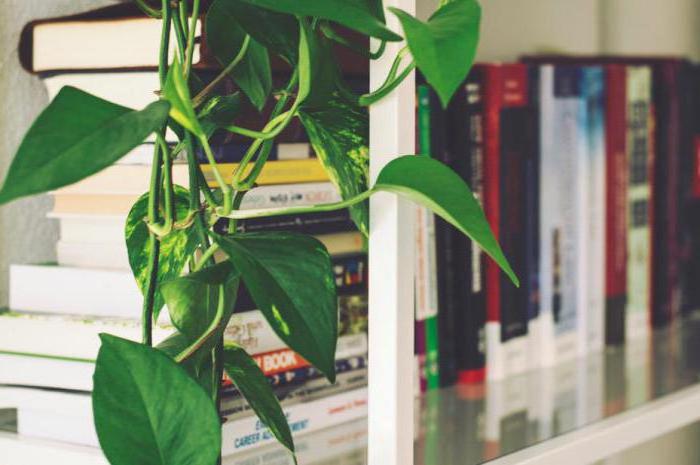
Instruments for measuring air humidity
Among the specialized instruments for measuring humidity levels, the most famous are the following:
- A hygrometer is one of the easiest to use. This instrument has a small screen that displays the percentage of moisture contained in the air. The cost of such a device can be quite high.
- A psychrometer is a device for determining air humidity, consisting of two thermometers. Its operation is based on recording indicators of the temperature difference between dry and wet sensors. The operation of this device can be emulated at home using just one thermometer.
To determine air humidity using the psychrometer principle, we need one thermometer and gauze cloth. The first step is to record the current room temperature, and then wrap the base of the thermometer with a cloth soaked in water. After waiting about 10 minutes, you need to subtract the second value from the first value and refer to the psychometric table.
Here the first column corresponds to the readings of a “dry” thermometer, and the top row of numbers corresponds to the readings of a thermometer wrapped in wet gauze. The intersection of these values will be the percentage indicator of air humidity in the apartment.
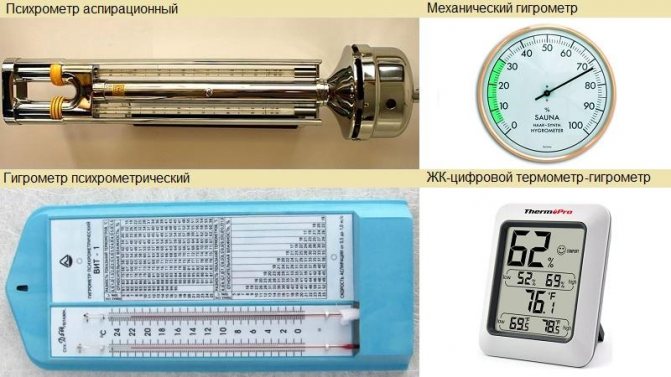
Instruments that measure air humidity make it possible to quickly obtain accurate information.
Air dryers
This device is designed to effectively absorb excess moisture. During the treatment process, air passes through a special evaporating membrane, which turns moisture into condensate. Drops of water are collected inside the device in a special container. The air is reheated and comes out, clean but devoid of moisture.
Important! When purchasing such a unit, do not forget to pay attention to the performance of the device and the maximum permissible volume of water that the dehumidifier can process per day.
Household dehumidifiers are capable of drying from 12 to 300 liters of water in 24 hours. They are:
- Portable. This model is lightweight and portable and can be placed in any room.
- Stationary. The dehumidifier is mounted on the wall, so it cannot be transported from one room to another.
Important! Such devices can even be used in refrigerated rooms. This will at least promote the formation of frost. When the tank is completely filled with water, due to untimely emptying of the tank, the dehumidifier automatically turns off.
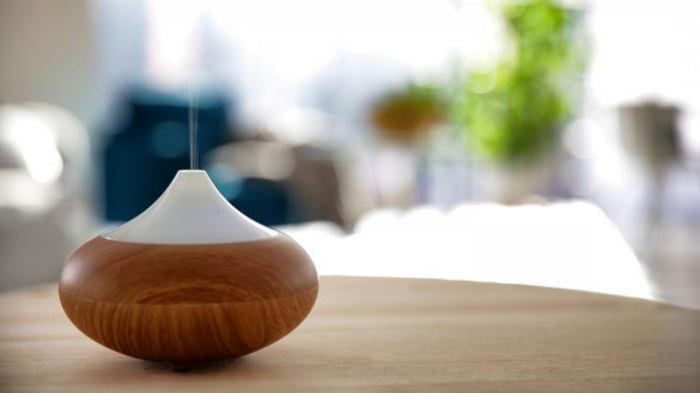
Moisture absorbers
Such devices are convenient to use for large areas. Using a special tablet inserted into the device, water is absorbed from the air. This technique is designed to drain an area of up to 30 m2.
Important! The only but significant drawback of the moisture absorber is the need for frequent, controlled tablet changes.
This device is most often used during the heating season, when air humidity is highest.
Important! This is a convenient and easy to use thing. It does not make noise during operation, is compact and not overpriced.
As you can see, determining the air humidity in an apartment is equally important, as is maintaining it in optimal conditions.
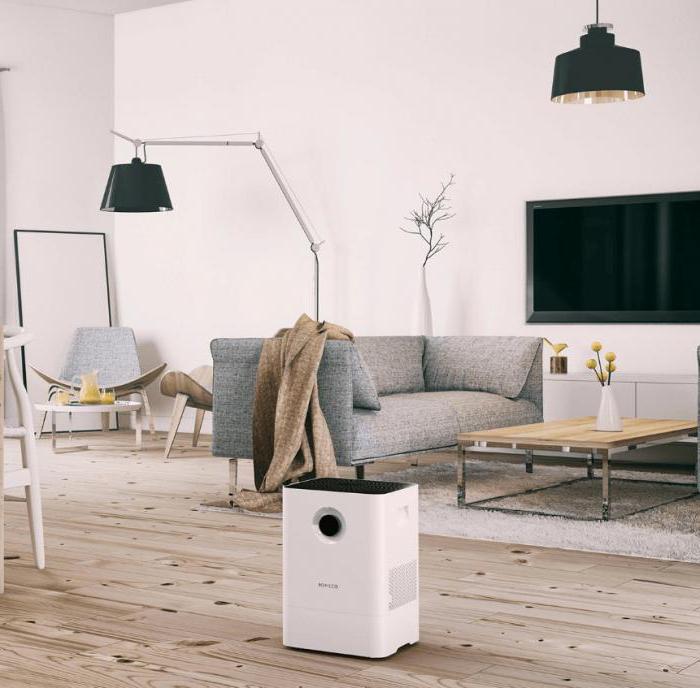
Effective folk methods
You can do without special equipment, saving money on the purchase, but if you have to deal with high humidity, try one of several effective methods that were used in the old days:
- Ventilate the room regularly, regardless of weather conditions. This helps reduce moisture in the apartment. The more often you carry out the procedure, the better the air in the room dries.
- Don't curtain the windows. The sun's rays passing through the glass help dry the room.
Installing a modern air conditioner in a room will help regulate not only temperature, but also air humidity.
The problem of abnormal humidity in an apartment should be taken seriously. If there is a need to regulate its level, then this issue should not be delayed, since this will subsequently result, at a minimum, in the form of poor health of the inhabitants of the house. The presence of a device for measuring air humidity in the apartment will always keep the situation under control.
Methods for improving humidity indicators
Having considered the questions about what the humidity in an apartment should be and how to measure it, it’s time to talk about ways to regulate this parameter. Some of them have already been mentioned in our article; let’s look at them in more detail.
- An air humidifier is the simplest and most effective solution. Most often sold complete with a hygrometer.
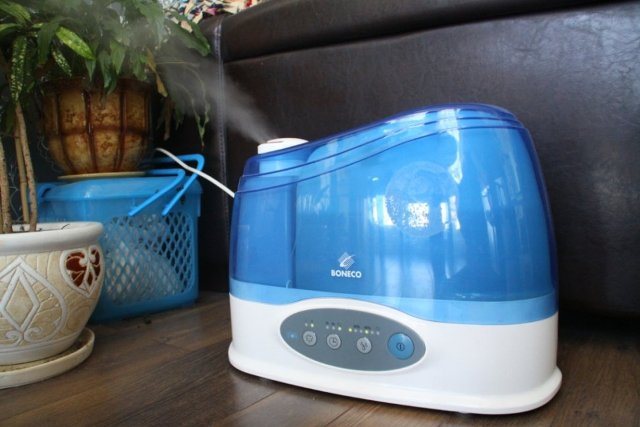
- Air humidification using a spray bottle , which can be used when ironing clothes. The method is simple, but not the most productive.
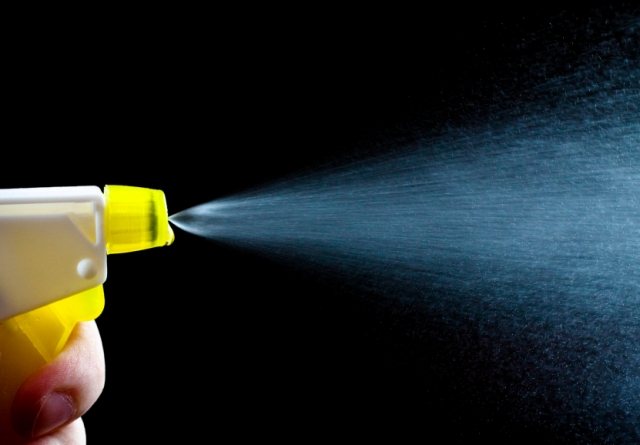
- Drying clothes on radiators . You can also simply place a wet towel on the radiator, but keep an eye on the humidity level so you don't overdo it.
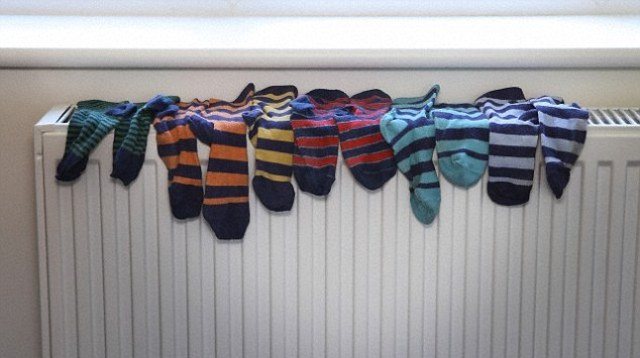
- Jars filled with water placed around the apartment . To avoid drying out the internal parts of the piano, this method is still actively used, you just need to remember the need to periodically add water.
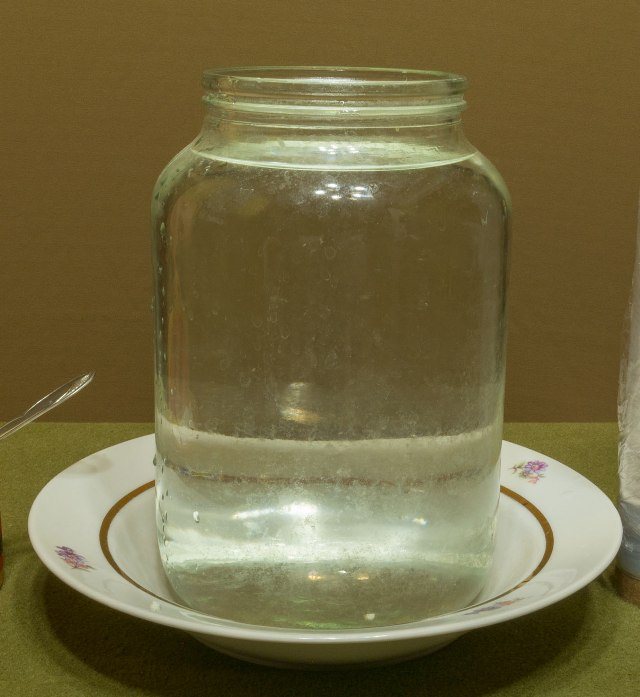
After a most detailed consideration of the issue of how to regulate humidity inside residential premises and why it is necessary, it remains to be reminded that your health and the health of your children is the most valuable thing that should be constantly taken care of.
We recommend Geothermal heating at home: principles and types of heating systems
